The Cheetah Characteristics of the Sphinx's Head and Face
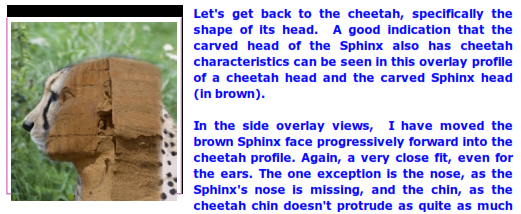
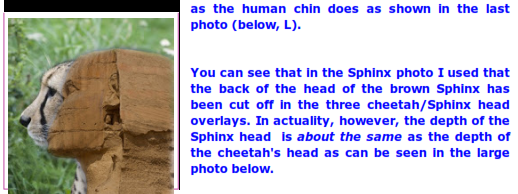
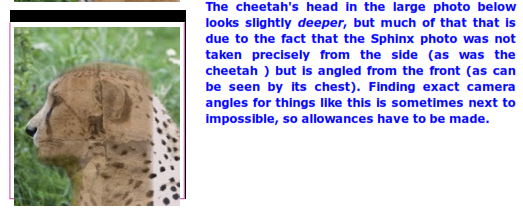

Nevertheless, you can see that the head depth of the cheetah and the Sphinx is about the same. As for the back of the Sphinx head suddenly cutting in and not extending back at a smooth angle, that is another anomaly that I'll explain as I progress.
As for the width of the Sphinx face, it is very similar to the width of the cheetah face, especially its "squareness". In the preceding section, I outlined four factors that contribute to it. There is another factor, however, which has to be included.
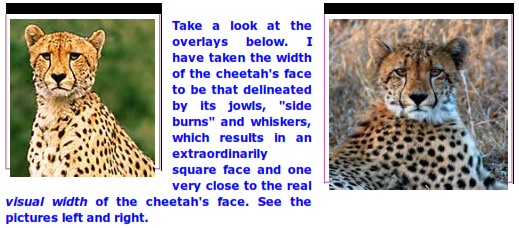
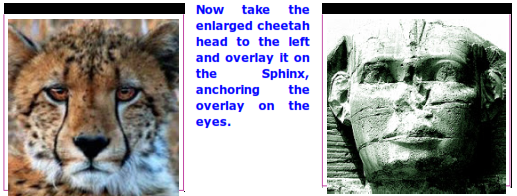
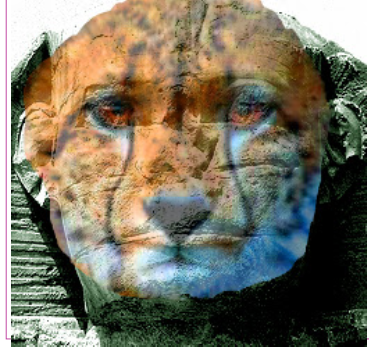
I am not saying the fit is identical. Part of that is due to the fact of the two photos being taken from different angles of elevation. However, as can be seen, the fit is very close in width. This width similarity added to the equality of depth of the Sphinx/cheetah head can't be a coincidence. The extreme width and depth of the Sphinx head have to be accounted for, so in addition to the possible factors contributing to this that I mentioned earlier, I believe there is a much more important reason why the Sphinx face is carved as it is: the Sphinx face is modeled after that of a cheetah in its depth and width.
One last thing. The relatively flat top of the head of the Sphinx has been another cause of puzzlement to many observers. This puzzle is solved once we realize that the top of the cheetah's head is similarly flat. Compare these three head-on photos of a cheetah, a Nubian woman, the Sphinx. This isn't a camera trick.Try it with any human head. There is a roundness to the top of human heads
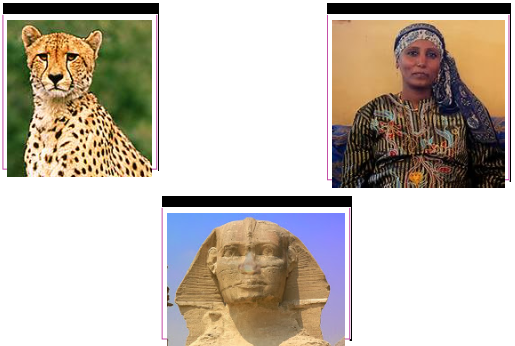
What I am suggesting is that the initial bas relief carving honored those cheetah similarities and they were carried forward into Phases 2 and 3, which I also see being done in preliterate times. As for the differences, the cheetah compared to the human chin of the Sphinx. Yet it is really inconsequential, as the carvers of the face saw the face as being essentially human but one that also accommodated several cheetah proportional characteristics.
Again it is my contention that these preliterate carvers may not have known about sophisticated scaling techniques, or how to render delicate facial detail, but they did know how to "carve between the lines" so as to alter the proportions to get the cheetah characteristics they wanted.
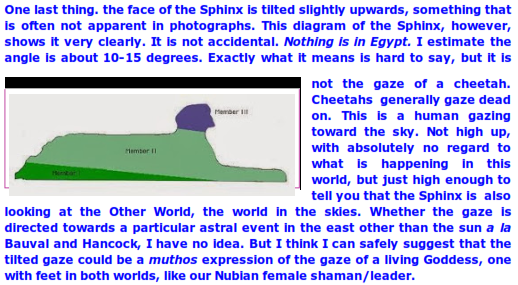
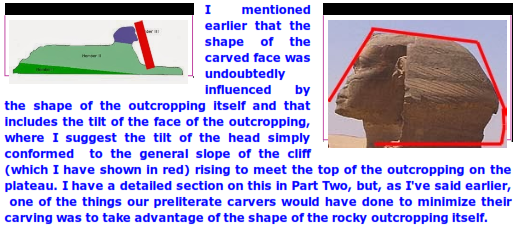
So it is possible that the face may be at tilted up at an angle simply because the face of the outcropping was at that angle, although I also believe that the carvers saw the tilt of the face as a sacred indication of the right direction of the gaze and simply took advantage of that fact to elevate the gaze of the Sphinx. Similarly, I believe that the top of the head of the Sphinx is also the actual top of the outcropping, which I have outlined in red (See photo above, R). I believe the top of the actual outcropping was slightly curved as is the current top of the Sphinx's head.













